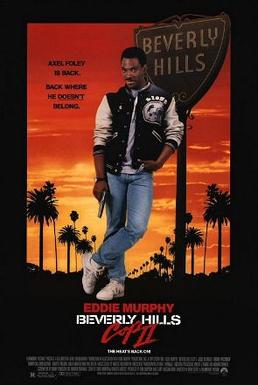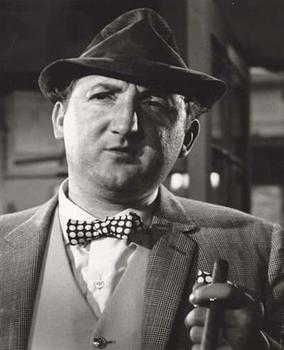
The Great Train Robbery was the robbery of £2.61 million, from a Royal Mail train heading from Glasgow to London on the West Coast Main Line in the early hours of 8 August 1963 at Bridego Railway Bridge, Ledburn, near Mentmore in Buckinghamshire, England.
The year 1962 in film involved some very significant events, with Lawrence of Arabia winning seven Academy Awards including Best Picture and Best Director.

Aristotelis "Telly" Savalas was a Greek American actor. Noted for his bald head and deep, resonant voice, he is perhaps best known for portraying Lt. Theo Kojak on the crime drama series Kojak (1973–1978) and James Bond archvillain Ernst Stavro Blofeld in the film On Her Majesty's Secret Service (1969).

The Big Valley is an American Western television series that originally aired from September 15, 1965, to May 19, 1969 on ABC. The series is set on the fictional Barkley Ranch in Stockton, California, from 1884 to 1888. The one-hour episodes follow the lives of the Barkley family, one of the wealthiest and largest ranch-owning families in Stockton, led by matriarch Victoria Barkley, her sons Jarrod and Nick, daughter Audra, and their half-brother Heath. The series was created by A.I. Bezzerides and Louis F. Edelman, and produced by Levy-Gardner-Laven for Four Star Television.

Beverly Hills Cop II is a 1987 American buddy cop action comedy film directed by Tony Scott, written by Larry Ferguson and Warren Skaaren, and starring Eddie Murphy. It is the sequel to the 1984 film Beverly Hills Cop and the second installment in the Beverly Hills Cop film series. Murphy returns as Detroit police detective Axel Foley, who reunites with Beverly Hills detectives Billy Rosewood and John Taggart to stop a criminal organization after Captain Andrew Bogomil is shot and seriously wounded.

Elisha Vanslyck Cook Jr. was an American character actor famed for his work in films noir. According to Bill Georgaris of They Shoot Pictures, Don't They, Cook appeared in a total of 21 films noir, more than any other actor or actress. He played cheerful, brainy collegiates until he was cast against type as the bug-eyed baby-faced psychopathic killer Wilmer Cook in the 1941 version of The Maltese Falcon. He went on to play deceptively mild-mannered villains. Cook's acting career spanned more than 60 years, with roles in productions including The Big Sleep, Shane, The Killing, House on Haunted Hill, and Rosemary's Baby.

Urban Clifford "Urbie" Green was an American jazz trombonist who toured with Woody Herman, Gene Krupa, Jan Savitt, and Frankie Carle. He played on over 250 recordings and released more than two dozen albums as a soloist. He was inducted into the Alabama Jazz Hall of Fame in 1995.

Ronald Fraser was a British character actor, who appeared in numerous British plays, films and television shows from the 1950s to the 1990s.

Douglas Fowley was an American movie and television actor in more than 240 films and dozens of television programs, He is probably best remembered for his role as the frustrated movie director Roscoe Dexter in Singin' in the Rain (1952), and for his regular supporting role as Doc Holliday in The Life and Legend of Wyatt Earp. He was the father of rock and roll musician and record producer Kim Fowley.
This is a list of players, both past and present, who appeared in at least one game for the New York Giants or the San Francisco Giants.

Jack La Rue was an American film and stage actor.

Green Dolphin Street is a 1947 American historical drama disaster film directed by Victor Saville and starring Lana Turner, Van Heflin, and Donna Reed. It was produced by Carey Wilson. Based on the 1944 novel Green Dolphin Street by Elizabeth Goudge, it was released by Metro-Goldwyn-Mayer.

In the 1970s in jazz, jazz became increasingly influenced by Latin jazz, combining rhythms from African and Latin American countries, often played on instruments such as conga, timbale, güiro, and claves, with jazz and classical harmonies played on typical jazz instruments. Artists such as Chick Corea, John McLaughlin and Al Di Meola increasingly influenced the genre with jazz fusion, a hybrid form of jazz-rock fusion which was developed by combining jazz improvisation with rock rhythms, electric instruments, and the highly amplified stage sound of rock musicians such as Jimi Hendrix. All Music Guide states that "..until around 1967, the worlds of jazz and rock were nearly completely separate." However, "...as rock became more creative and its musicianship improved, and as some in the jazz world became bored with hard bop and did not want to play strictly avant-garde music, the two different idioms began to trade ideas and occasionally combine forces." On June 16, 1972 the New York Jazz Museum opened in New York City at 125 West 55th Street in a one and one-half story building. It became the most important institution for jazz in the world with a 25,000 item archive, free concerts, exhibits, film programs, etc.
In the late 1960s, Latin jazz, combining rhythms from African and Latin American countries, often played on instruments such as conga, timbale, güiro, and claves, with jazz and classical harmonies played on typical jazz instruments broke through. There are two main varieties: Afro-Cuban jazz was played in the US right after the bebop period, while Brazilian jazz became more popular in the 1960s. Afro-Cuban jazz began as a movement in the mid-1950s as bebop musicians such as Dizzy Gillespie and Billy Taylor started Afro-Cuban bands influenced by such Cuban and Puerto Rican musicians as Xavier Cugat, Tito Puente, and Arturo Sandoval. Brazilian jazz such as bossa nova is derived from samba, with influences from jazz and other 20th-century classical and popular music styles. Bossa is generally moderately paced, with melodies sung in Portuguese or English. The style was pioneered by Brazilians João Gilberto and Antônio Carlos Jobim. The related term jazz-samba describes an adaptation of bossa nova compositions to the jazz idiom by American performers such as Stan Getz and Charlie Byrd.

Plunder is a farce by the English playwright Ben Travers. It was first given at the Aldwych Theatre, London, the fifth in the series of twelve Aldwych farces presented by the actor-manager Tom Walls at the theatre between 1923 and 1933. Several of the actors formed a regular core cast for the Aldwych farces. The play shows two friends committing a jewel robbery, for arguably honourable reasons, with fatal results.












